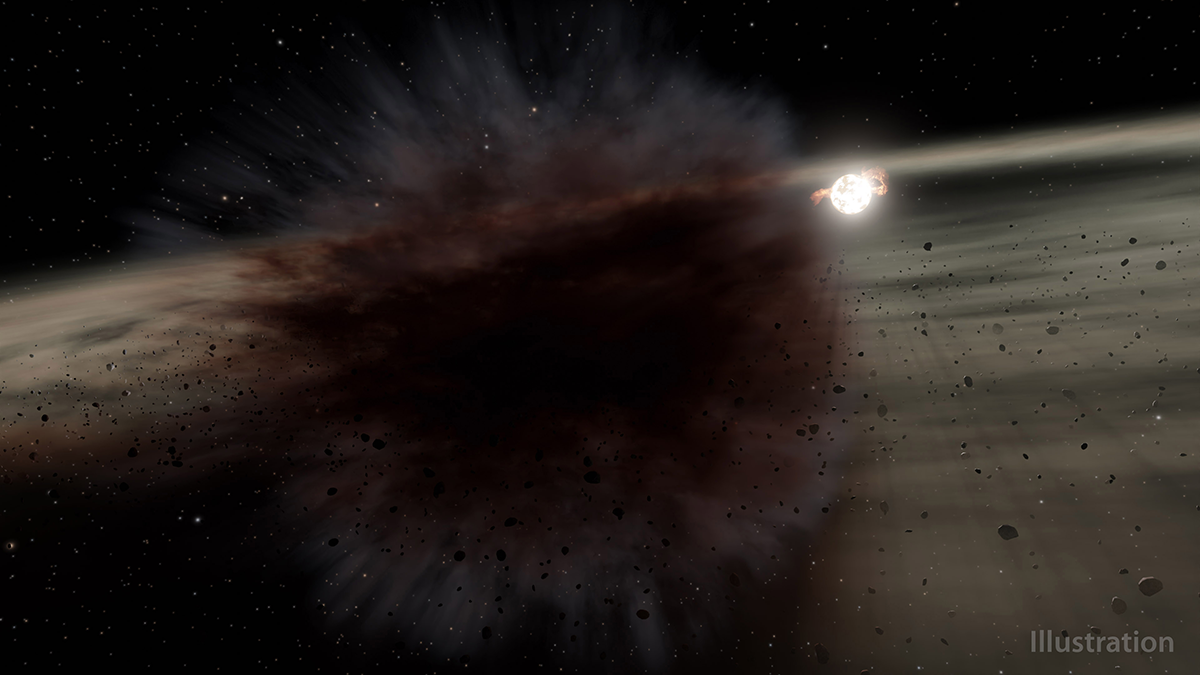Rivers and oceans are essential parts of our planet’s surface, but scientists are still puzzling out where all the water came from. A new study has ruled out once-molten meteorites called achondrites as possible sources.
The achondrites were bone-dry—so dry they can be eliminated as major sources of Earth’s water.
Earth’s water might have been delivered by icy meteorites or comets that collided with the young planet. In the new study, researchers tested whether achondrites might fit that bill.
The authors measured water concentrations in achondrites that formed in the early days of the solar system. To their surprise, the achondrites were bone-dry—so dry they can be eliminated as major sources of Earth’s water. The results bring researchers closer to understanding the processes that made Earth a blue planet and could inform astronomers’ search for water on planets outside our solar system.
Building a Blue Planet
Tracing the origins of Earth’s water leads researchers to the beginnings of the solar system 4.5 billion years ago. During our solar system’s infancy, solid objects between 1 mile and several hundred miles across—so-called planetesimals—were likely dispersed throughout the solar system. Those planetesimals coalesced from a disk of gas and dust surrounding the young Sun, as tiny dust particles collided and merged to form bigger objects, ultimately producing planetesimals up to hundreds of miles across.
In the outer solar system, far from the Sun’s burning heat, temperatures were cold enough for water to freeze. Thus, “objects in the outer solar system could incorporate water ice,” explained Megan Newcombe, a petrologist and volcanologist at the University of Maryland and lead author of the study. “On the other hand, objects in the inner solar system likely formed in a warmer and drier environment.”
Our blue planet is remarkable because it formed in the sweltering inner solar system, where water was unable to condense. To explain the abundance of water on Earth, scientists assumed that water-rich objects from the outer solar system careened into the inner regions and smashed into Earth, adding drops of water to a reservoir that gave rise to our oceans, rivers, and lakes.
Melted Meteorites Are Surprisingly Dry
Newcombe and her coauthors tested whether a group of meteorites called achondrites could have delivered Earth’s water. Achondrites are once-molten meteorites that formed in the blistering heat of our early solar system. At that time, the decay of radioactive elements heated most large planetesimals enough to melt their interiors. The molten planetesimals differentiated into core, mantle, and crust, similar to the structure of Earth and other terrestrial planets. Achondrite meteorites are fragments of those once-molten and differentiated planetesimals.
“All of the meteorites were dry, regardless of whether they formed in the inner or outer solar system.”
To test whether achondrites could have contributed to Earth’s water budget, Newcombe’s group measured water concentrations in achondrites from the inner and outer solar system. They expected to find more water in samples from the cool outer regions, but to their surprise, “all of the meteorites were dry, regardless of whether they formed in the inner or outer solar system,” said Newcombe.
Previously, some researchers assumed that planetesimals from the outer solar system could have retained some of their water during melting. The new study refuted that assumption.
“The results indicate that melting and differentiation completely erase the initial water concentration,” said Laurette Piani, a researcher at the Centre de Recherches Pétrographiques et Géochimiques (Center for Petrographic and Geochemical Research) in France, who was not involved with the study. Piani said the data ruled out melted planetesimals as sources of Earth’s water. “This is quite surprising and a great input of the paper.”
Water, Water Anywhere?
If melted meteorites are out of the running, what other objects could have delivered Earth’s water? Perhaps, Newcombe explained, Earth’s water originated from planetesimals that formed later in the solar system’s history, after the radioactive elements that heated early planetesimals had already decayed.
“Our results narrow down the types of bodies that [can] deliver water.”
Alternatively, Earth could have obtained its water from small planetesimals, which dissipated more heat than their larger counterparts and didn’t get hot enough for their interiors to melt. These cooler bodies could have retained their ice and are plausible sources of Earth’s water.
Beyond helping scientists understand Earth’s history, the study has implications for the search for water—and life—on distant planets. To amass large amounts of water, a terrestrial planet not only needs to incorporate material from the outer solar system, but also a significant portion of that material must be unmelted. “Our results narrow down the types of bodies that [can] deliver water,” said Newcombe. “In terms of looking at other solar systems, it is important to consider the relative amounts of melted versus unmelted materials that form terrestrial planets.”
—Caroline Hasler (@carbonbasedcary), Science Writer

